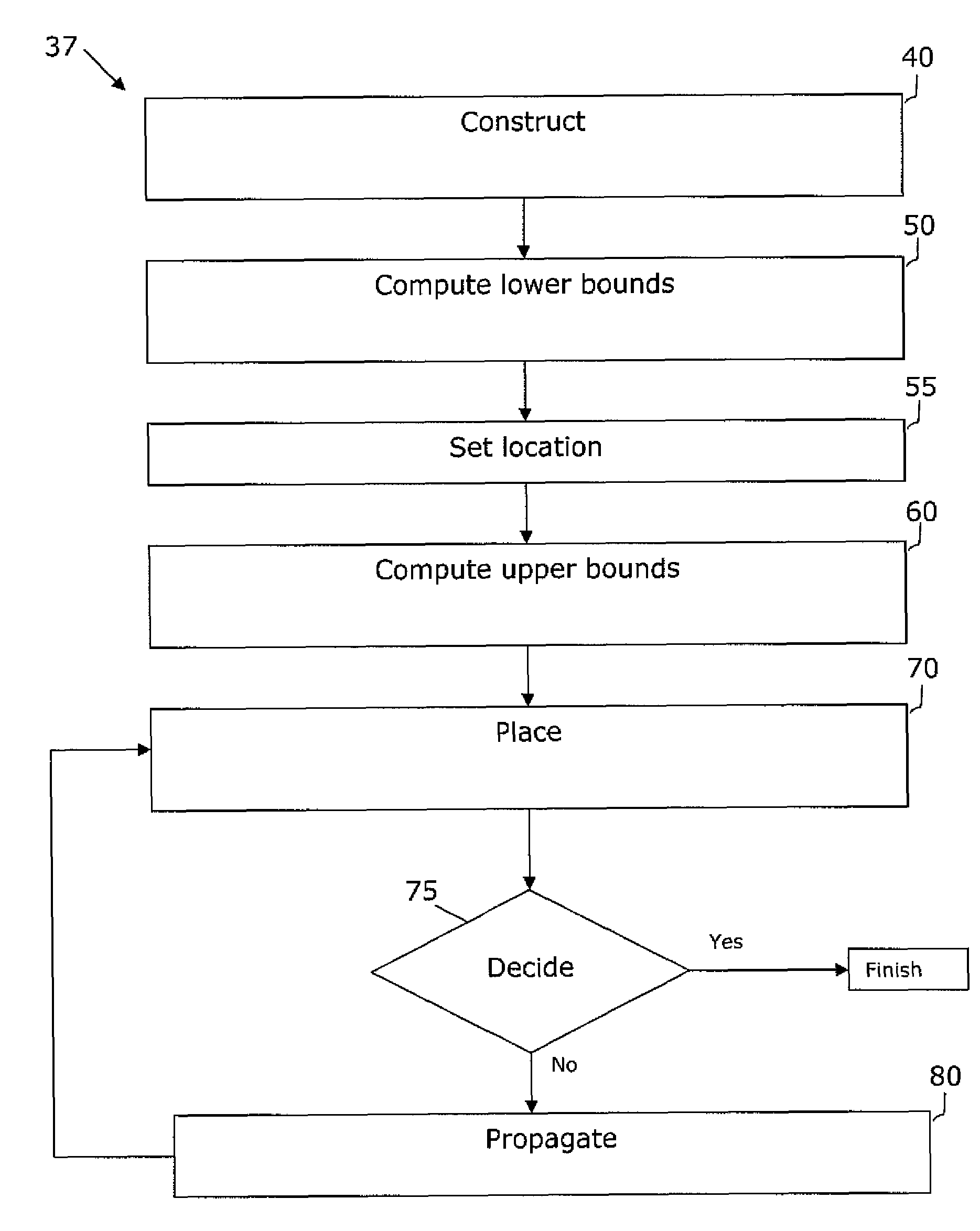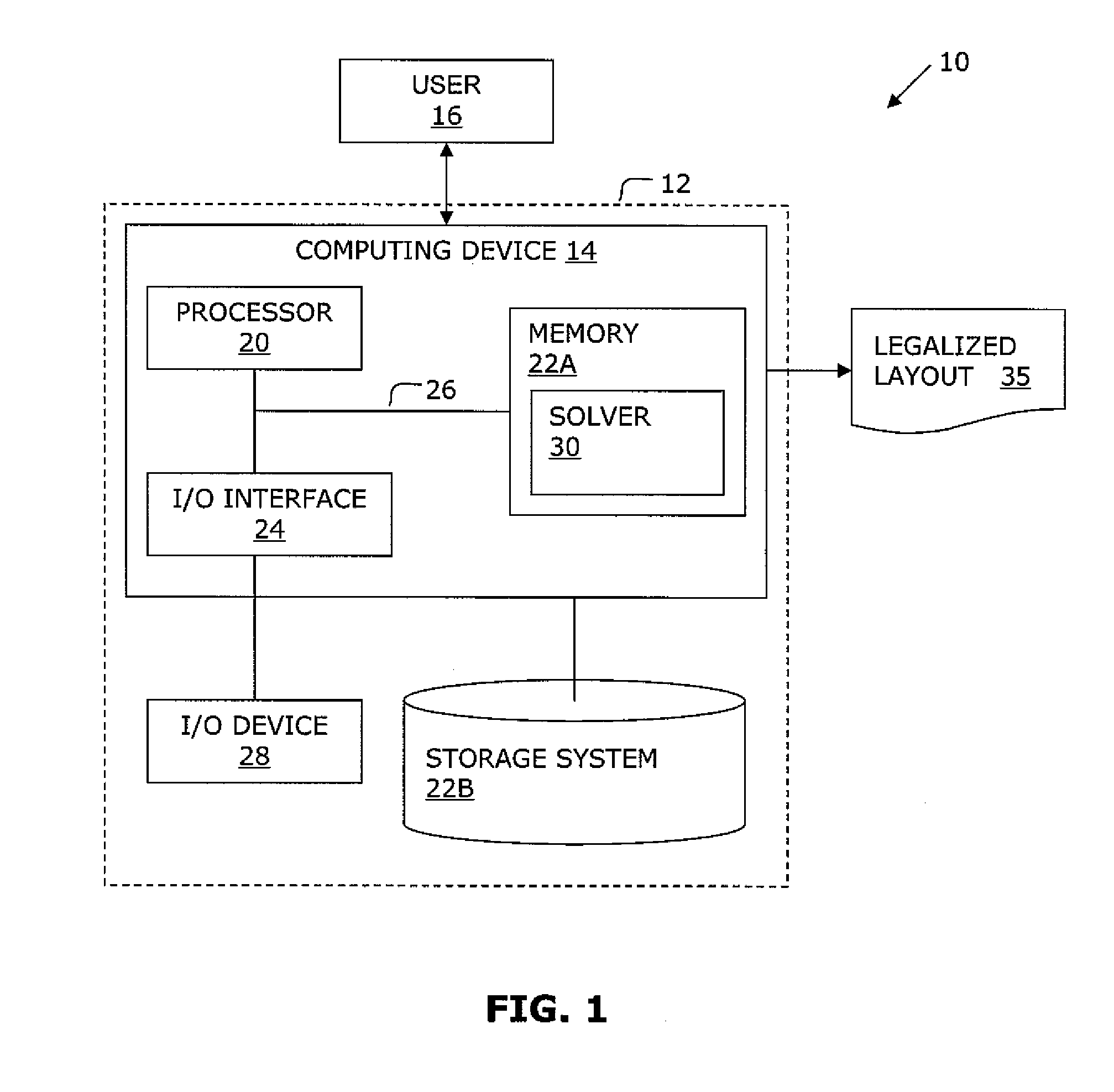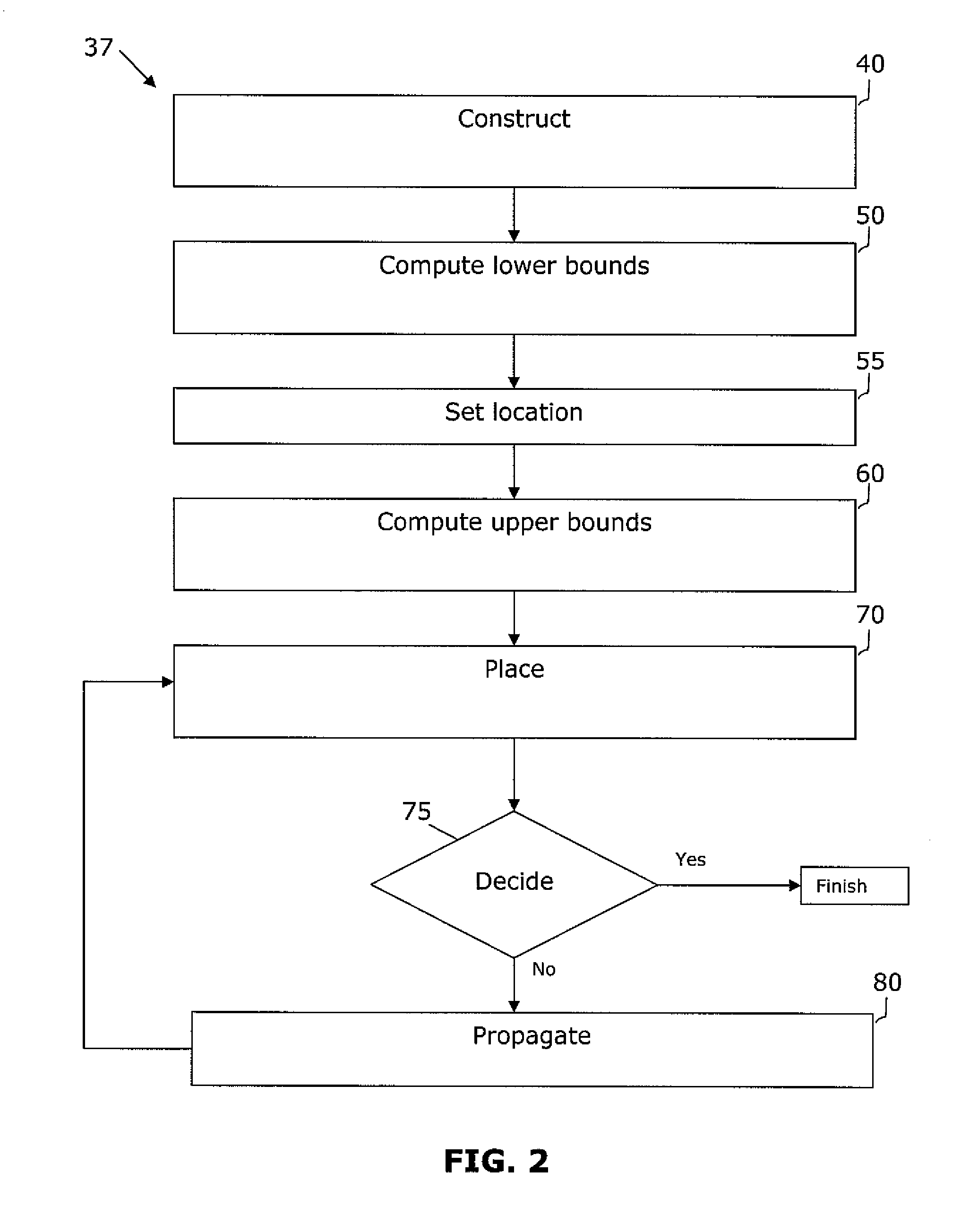VLSI artwork legalization for hierarchical designs with multiple grid constraints
a hierarchical design and artwork technology, applied in the field of object layouts, can solve the problems of high post-layout process cost, high manufacturing cost, and the most challenging topic of designers and researchers in the field of design for manufacturability (dfm)
- Summary
- Abstract
- Description
- Claims
- Application Information
AI Technical Summary
Benefits of technology
Problems solved by technology
Method used
Image
Examples
Embodiment Construction
[0020]The invention is directed to a system and method for legalizing a flat or hierarchical VLSI layout to meet multiple grid constraints and conventional ground rules. Given a set of ground rules with multiple grid constraints and a VLSI layout (either hierarchical or flat) which is layout-versus-schematic (LVS) correct but may not be ground rule correct, the invention provides a legalized layout which meets the multiple grid constraints while maintaining LVS correctness and fixing the ground rule errors as much as possible with minimum layout perturbation from the input design.
[0021]In legalizing a flat VLSI layout to meet multiple grid constraints and conventional ground rules, embodiments of the invention use a minimum perturbation-driven graph-based grid legalization system and method to place objects on-grid while satisfying ground rule constraints. In embodiments of the invention, the system and method detects the existence of positive cycles by determining the iteration bou...
PUM
 Login to View More
Login to View More Abstract
Description
Claims
Application Information
 Login to View More
Login to View More - R&D
- Intellectual Property
- Life Sciences
- Materials
- Tech Scout
- Unparalleled Data Quality
- Higher Quality Content
- 60% Fewer Hallucinations
Browse by: Latest US Patents, China's latest patents, Technical Efficacy Thesaurus, Application Domain, Technology Topic, Popular Technical Reports.
© 2025 PatSnap. All rights reserved.Legal|Privacy policy|Modern Slavery Act Transparency Statement|Sitemap|About US| Contact US: help@patsnap.com



